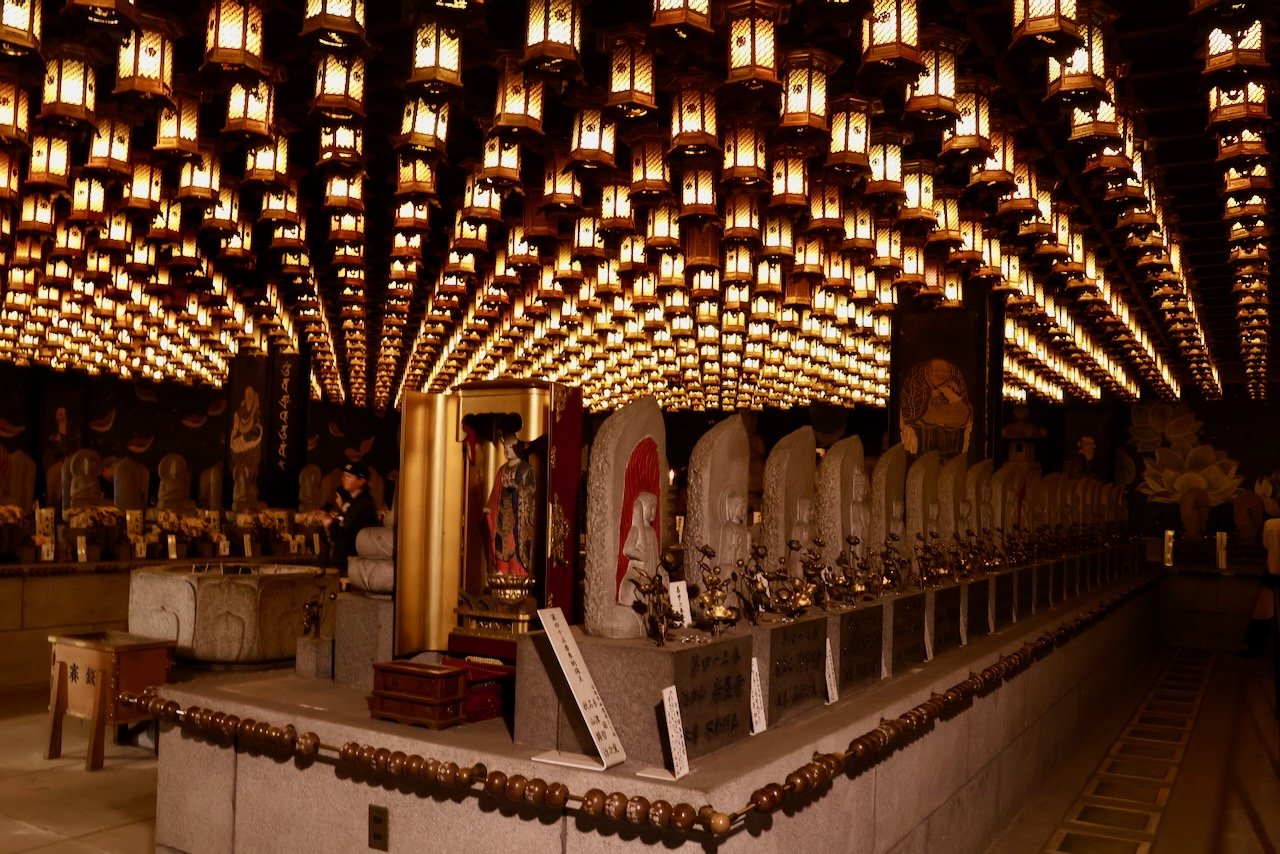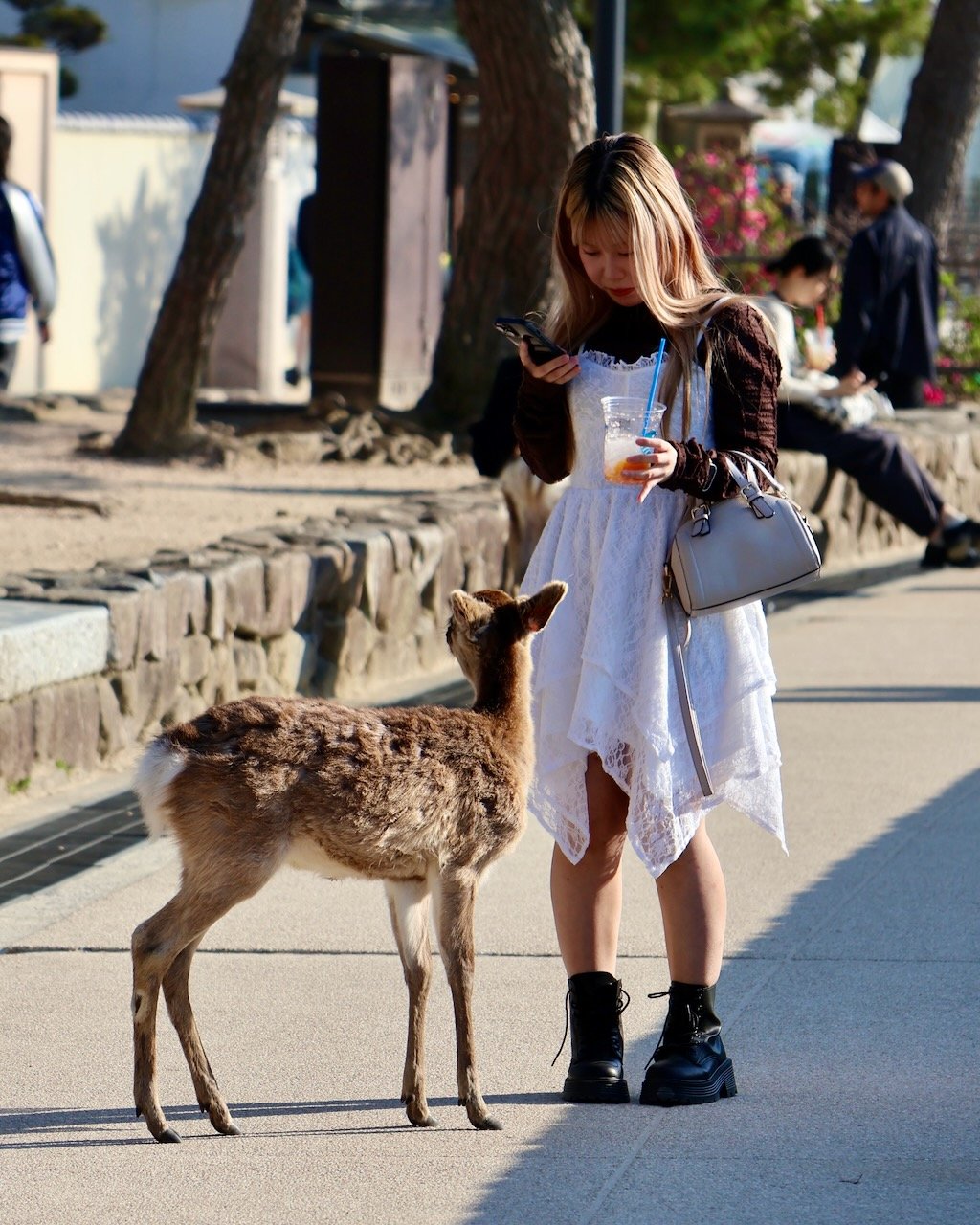Japan | Hiroshima & Miyajima (Days 6-7)
Hiroshima Day 1:
Five hours and two trains brought us into Hiroshima, with stunning scenery rolling by during the whole route and plenty of time to write and edit photos. After dropping our bags, we made our way to the Peace Park and Memorial Museum, commemorating the lives lost from the atomic bomb. It was, as expected, extremely heavy and emotional. I had purchased an audio guide but ended up switching it off early into the exhibits — I just couldn’t bear hearing the descriptions on top of seeing everything else. The museum was also incredibly crowded, and being bumped into while trying to process the weight of it all wasn’t the greatest experience. I eventually stepped out to take a break from the crowds and stuffy air and watched the crowds paying their respects at the memorial. One thing that stuck with me – it was powerful to learn that Hiroshima’s mission as a city today is peace, with many different initiatives advocating against the proliferation of nuclear weapons and keeping the memories alive of those who lived through what happened on August 6, 1945.
From there, Asya and I made our way over to Hiroshima Castle — which had been destroyed by the bomb and later rebuilt. While it was closed when we arrived, the grounds thesmelves were very pleasant. We caught a lovely sunset as we made our way through dinner. Then, quite by accident, we stumbled into the bright neon lights and lively Friday night crowds. of the Nagarekawa District — the city’s entertainment district filled with a dense concentration of drinking and dining establishments, pachinko parlors, department stores, and nightclubs. Dazzled, we wandered the side streets for a bit.
We then met up with our group for dinner at Okonomiyaki Mura – an entire building packed with tiny restaurants specializing in different variations of okonomiyaki, a pan-fried dish that typically consists of batter and cabbage. In Hiroshima, their variation also includes noodles. After placing our orders, we watched the chef go to work, using the entire length of the hot flat stove to craft his creations. Watching the chef work was mesmerizing, with his deft timing and expert movements. He was training a younger woman, and it was interesting to catch the differences in their styles. He was able to crack and egg one-handed without a hint of shell and keep the process moving with ease – while her attempts left her fishing out a few shards of shell.
We each received a veritable mountain of food – batter, noodles, sauce, strips of pork, a mountain of scallions, another layer of batter, all squished down into a pancake-like form and topped with a fried egg. I got mine with grilled oysters on top – another local speciality. To break into it, you grabbed a spatula-knife and chiseled away. Needless to say, it was absolutely delicious and an experience I won’t easily forget. At one point after we dug in, Asya said wistfully: “I think I might miss this for the rest of my life until I can travel here again.” And truly, there’s no better way to sum it up than that.
Hiroshima Day 2: Miyajima Island
Miyajima, meaning “beautiful island”, is considered to be a sacred place where many gods reside. It's filled with soaring green mountains, tucked-away temples and shrines, and quiet side streets that give a taste of local life. After a very pleasant ferry ride over from Hiroshima, we disembarked and within minutes, we randomly encountered a woman holding... a bush baby, of all things. It was tiny, extremely cute, and very shy.
I’d also heard about the island’s famous deer and was eager to spot them. Sure enough, there they were right away, napping in the main square. One even tried (unsuccessfully) to wander into a shop. Unlike the famous Nara deer, these guys don’t bow for treats, but I quickly learned that if you make direct eye contact with them, they do come straight toward you with large expectant eyes. Dodging the deer, we made our way to island’s iconic giant Torii Gate to catch it surrounded by water during high tide. With the waters lapping around it. It felt almost otherworldly.
From there, we headed for the ropeway to reach Mount Misen, having been warned by someone who had learned the hard way to avoid attempting to hike it. Very grateful that I listened — the bus ride to the ropeway station was steep around several narrow switchbacks, and the two successive cable cars we took were practically taking us vertically up the slope. Once we reached the summit, we wandered through peaceful forest trails toward the temple area and eventually tackled the final hike up to the summit. The many, many sets of stairs earned us some truly glorious views — on this bright sunny day, we could see the waterways, city center, and hills of the Hiroshima region stretching endlessly beneath us.
While waiting for the bus on the way back down, we passed a family having a bit of a moment – a very determined deer was interested in their picnic, and one of the kids kept bursting into tears every time it got too close. The father tried everything, clapping, stomping, shouting, and herding the deer away, but it kept returning. He resorted to to flapping the picnic blanket like a matador to finally send it on its way back into the forest.
Back in town, we caught the Torii Gate again at low tide — now able to walk right up beneath it, with visitors spread out along the newly exposed areas of the beach. Locals were digging in tide pools for clams and oysters, and teeny crabs scuttled between puddles. Starving after all our hiking, we hunted down a local specialty: grilled eel bowls. Our first choice was closed, but we found another cozy spot that served a generous lunch set. The eel was wonderful, and we practically inhaled it without hesitation. We also passed a bakery selling warm maple-leaf-shaped cakes filled with red bean paste — perfect for dessert.
The meal had given our feet just enough of a break that we were eager to explore again. We wandered through the quieter backstreets and stumbled across Daisho-in, a large temple complex tucked into a corner of the island. Not entirely sure what we’d find, we explored anyway — and were richly rewarded. At one point, following chanting we heard in a cave-like space beneath the main stairs, we discovered a stunning hall: a large copper room covered in hundreds of glowing lanterns, with rows of Buddha statues lining the walkways.
Outside, we spotted small monk statues — some, to our delight, wearing tiny knitted hats and scarves. I later learned that there are many different theories on the origin of these hats. Some sites like this one claim that it originated from a couple who knit hats for a living and placed them on the statues to keep them warm – and in repayment, the statues came to life and gave them food for their kindness. It was so sweet spotting the different adorable accessories — some had coins placed in front of them, others had beads, various elaborate hat-scarf combos, or personalized trinkets.
We wandered back to the main town area for some souvenir browsing and circled back for one more look at the Torii Gate. The tide was beginning to rise again, but the beach still stretched pretty far out. We crossed it again before finding one more spot to rest our feet and entertain ourselves by observing the deer harassing tourists. Some would stalk anyone holding food; others poked around shopping bags or even tried to swipe ice cream cones. One cameraman even trained the deer to pose with people in exchange for treats — only to have the deer trail him persistently afterward, nosing his pockets
Back in Hiroshima, I made a quick stop at Uniqlo for a few lightweight t-shirts — having realized that I had packed for weather about 10 degrees colder than it has been. We tried for an udon dinner, but the restaurant only took reservations and turned us away. Instead, we grabbed yakitori skewers from the train station and finished the day with a 7-Eleven cream puff for dessert.



































